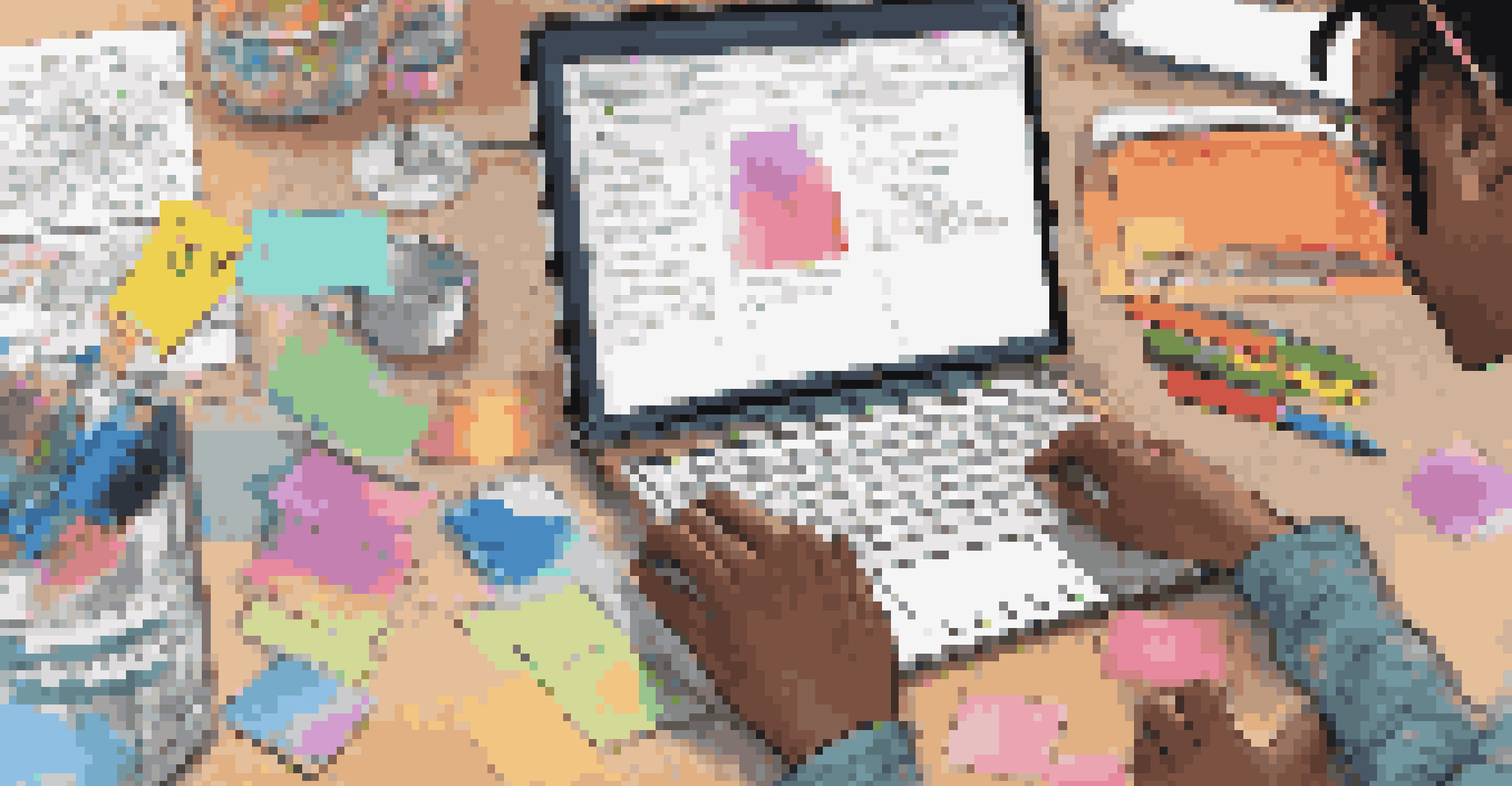The Impact of Digital Storytelling on Emotional Learning

Understanding Digital Storytelling in Education
Digital storytelling combines narrative with digital media to create engaging learning experiences. This approach allows students to express themselves creatively while learning essential skills. By using tools like videos, podcasts, and interactive presentations, learners can connect more deeply with the material.
Storytelling is the most powerful way to put ideas into the world today.
In educational settings, digital storytelling transforms traditional teaching methods into dynamic, interactive experiences. Instead of passively receiving information, students become active participants in their learning journey. This active engagement is crucial for emotional learning, as it helps students relate personally to the content.
Furthermore, digital storytelling encourages collaboration among students. When they work together to create stories, they develop social skills and empathy, both of which are vital for emotional intelligence. This collaborative aspect not only makes learning fun but also fosters a sense of community in the classroom.
The Role of Emotions in Learning
Emotions play a critical role in how we learn and retain information. When learners are emotionally engaged, they are more likely to remember the material and apply it in real-life situations. This is why emotional learning is often emphasized in education, as it helps students connect with the content on a deeper level.

Research shows that emotionally charged experiences can enhance memory retention. When students engage with digital stories that resonate with them, they form personal connections that reinforce their understanding. This emotional investment not only aids memory but also promotes critical thinking and reflection.
Digital Storytelling Enhances Learning
This approach transforms education by engaging students actively and fostering emotional connections with the material.
Moreover, emotional learning helps students develop resilience and coping strategies. By processing their feelings through digital storytelling, learners can explore complex emotions in a safe environment, paving the way for personal growth and improved emotional regulation. This process is essential for overall well-being.
Creating Empathy Through Digital Narratives
Digital storytelling serves as a powerful tool for fostering empathy among students. When learners engage with stories that reflect diverse perspectives, they develop a greater understanding of others' experiences and emotions. This understanding is crucial in today’s multicultural world.
The greatest gift is not being afraid to question.
For instance, a student who creates a digital story about a social issue can invite peers to view the world through a different lens. This not only broadens their perspective but also encourages compassion and understanding for those facing challenges. Empathy is a key component of emotional learning, and storytelling is an effective way to nurture it.
Furthermore, sharing personal stories can create a safe space for vulnerability and connection within the classroom. When students share their narratives, they foster a culture of openness and support. This environment allows for deeper discussions about emotions, experiences, and values, strengthening the emotional learning process.
Enhancing Self-Expression and Identity
Digital storytelling empowers students to express their identities and emotions creatively. By crafting their own narratives, learners can explore who they are and what they value. This self-expression is vital for emotional learning, as it allows students to connect their experiences to the broader curriculum.
Additionally, when students share their stories, they validate their own feelings and experiences. This validation fosters confidence and self-awareness, essential components of emotional intelligence. As students become more comfortable with their identities, they are better equipped to handle emotional challenges.
Emotional Engagement Boosts Retention
When learners emotionally connect with content, they are more likely to remember and apply the information in real-life situations.
Moreover, digital storytelling can help students process complex emotions. Whether it’s joy, sadness, or anger, articulating these feelings through storytelling can lead to deeper understanding and healing. This process not only enhances emotional literacy but also encourages resilience in the face of adversity.
Building Community and Collaboration
The collaborative nature of digital storytelling fosters a sense of community among learners. When students work together on projects, they learn to appreciate diverse viewpoints and collaborate effectively. This teamwork is essential for developing social-emotional skills that are crucial in both academic and personal settings.
Through collaborative storytelling, students can share responsibilities, brainstorm ideas, and provide constructive feedback. This shared creative process strengthens relationships and promotes a sense of belonging. When students feel connected to their peers, they are more likely to engage emotionally with the learning material.
Additionally, community-building through storytelling can extend beyond the classroom. Students can share their digital stories with families and the wider community, creating opportunities for dialogue and connection. This outreach reinforces the importance of emotional learning beyond school and highlights the role of storytelling in building social bonds.
Challenges and Considerations in Digital Storytelling
While digital storytelling offers numerous benefits for emotional learning, it also presents challenges. Not all students may feel comfortable sharing personal narratives, and some may struggle with technology. Educators must provide support and encouragement to ensure all students can participate fully in this creative process.
Moreover, it’s essential to create a safe and respectful environment for sharing stories. Establishing ground rules for discussions and ensuring that students feel heard and valued is crucial. Educators should also be mindful of the diverse backgrounds and experiences of students to foster an inclusive atmosphere.
Collaboration Builds Community
Digital storytelling encourages teamwork among students, enhancing social-emotional skills and creating a supportive classroom environment.
Lastly, ongoing training for educators is vital to effectively integrate digital storytelling into the curriculum. Teachers must be equipped with the necessary skills and resources to guide students through the process. By addressing these challenges, educators can maximize the impact of digital storytelling on emotional learning.
Future Trends in Digital Storytelling and Emotional Learning
As technology continues to evolve, the potential for digital storytelling in emotional learning grows. Emerging tools like virtual reality (VR) and augmented reality (AR) can create immersive storytelling experiences that deepen emotional engagement. These innovations may revolutionize the way students connect with narratives and each other.
Additionally, the rise of social media platforms offers new avenues for students to share their digital stories. This connectivity allows for broader audiences and more diverse feedback, enriching the learning experience. As students engage with global communities, they can learn from a variety of perspectives, enhancing their emotional understanding.

Finally, integrating digital storytelling with social-emotional learning (SEL) frameworks can provide structured approaches to emotional skill development. By aligning storytelling projects with SEL goals, educators can create intentional learning experiences that promote emotional intelligence. The future of education lies in the intersection of technology, storytelling, and emotional learning.